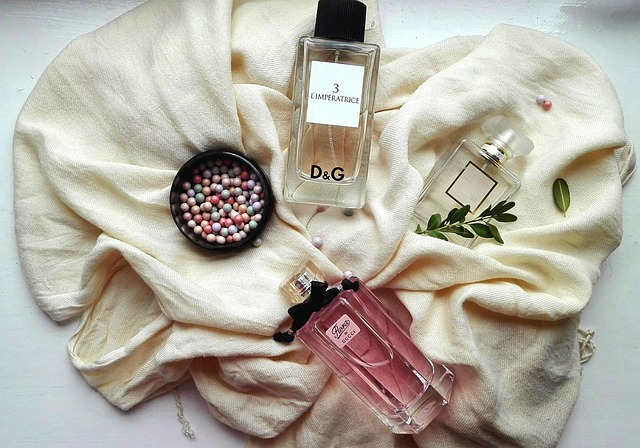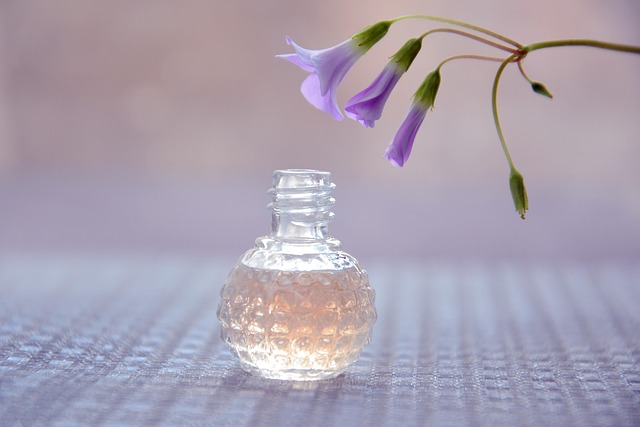The fragrance industry debates synthetic vs. natural scents, with Paco Rabanne Perfume leading by example. Natural fragrances from plant extracts offer complexity and authenticity but vary in cost. Synthetic scents provide versatility and affordability. Paco Rabanne blends rare natural ingredients with lab-created scents, empowering consumers to identify synthetic elements through scent evolution analysis. The brand's innovative approach combines natural essences with synthetic ingredients for unique, nature-inspired colognes that appeal to those valuing authenticity.
The scent of a perfume can transport us to a moment, a memory, or a dream. Yet, amidst the vast market of fragrances, discerning between synthetic and natural scents remains a challenge. This is particularly pertinent in the realm of high-end perfumes, where brands like Paco Rabanne offer enigmatic scents that captivate the senses. Understanding whether a perfume exudes synthetic or natural notes is crucial for both perfumists and consumers. This article delves into the intricacies of scent composition, dissecting the complexities to provide a clear guide, ensuring you can appreciate the nuanced beauty of fragrances, from Paco Rabanne’s creations to beyond.
- Understanding Synthetic vs Natural Scents
- The Art of Scent Identification
- Unveiling Paco Rabanne's Natural Essence
Understanding Synthetic vs Natural Scents

The world of fragrances presents a captivating yet complex realm where the distinction between synthetic and natural scents is paramount. This dichotomy forms the very essence of olfactory experiences, influencing how we perceive and interact with perfumes and colognes. At the forefront of this debate stands Paco Rabanne, renowned for its innovative and often boundary-pushing aromatics, such as the iconic Paco Rabanne Perfume and the invigorating Paco Rabanne Cologne collections. Understanding the nuances between synthetic and natural scents is crucial in navigating this olfactory landscape, enabling consumers to make informed choices that align with their preferences and values.
Natural scents derive from essential oils and extracts sourced directly from plants, flowers, fruits, and other botanical elements. These raw materials undergo careful distillation or extraction processes to capture their distinctive aroma compounds. The allure of natural fragrances lies in their complexity and depth, reflecting the intricate interplay of various botanicals. For instance, a natural cologne might blend bergamot and lemon for a refreshing top note with hints of lavender and vetiver providing a earthy, woody base. This authenticity resonates with consumers who appreciate the craftsmanship and environmental considerations behind such products. Notably, Paco Rabanne’s offerings often incorporate rare natural ingredients, ensuring an exquisite olfactory journey that celebrates the richness of nature.
In contrast, synthetic scents are created in laboratories through intricate chemical processes. Fragrance chemists blend various compounds to mimic the aromas found in natural sources or invent entirely new scent profiles. While synthetic fragrances may lack the botanical specificity of their natural counterparts, they offer unparalleled versatility and consistency. Paco Rabanne Cologne, for example, showcases this innovation with its carefully composed notes that evoke a vibrant, modern atmosphere. Synthetic scents can be more cost-effective to produce and often possess extended longevity, making them popular choices in the competitive fragrance market. However, some consumers prefer the ethical and environmental advantages of natural fragrances, opting for products that align with their values.
The line between synthetic and natural becomes increasingly blurred as advancements in technology and sustainability drive the industry forward. Modern techniques allow for the extraction of high-quality natural compounds while also enabling the creation of novel synthetic ingredients that closely resemble their natural counterparts. As consumers become more discerning, brands like Paco Rabanne embrace this challenge by transparently communicating their scent compositions. By providing detailed information about the origin and use of fragrances, they empower customers to make choices that resonate with their unique olfactory preferences and personal values.
The Art of Scent Identification

The art of scent identification is a subtle yet profound dance between our senses and memories. When assessing whether a fragrance is synthetic or natural, it’s crucial to delve into the intricate nuances that distinguish these categories. While some scents evoke immediate familiarity, others remain enigmatic, challenging even the most seasoned perfumers. Take, for instance, the iconic Paco Rabanne Perfume, renowned for its unique signature. The brand has consistently pushed boundaries, blending both synthetic and natural ingredients in their compositions, making scent identification a complex endeavor.
One of the key indicators is the perceptibility of individual notes. Natural fragrances often exhibit a more nuanced progression, where each layer reveals itself gently over time. Synthetic scents, on the other hand, can present with a sudden burst of intensity, followed by a rapid fade. The Paco Rabanne Cologne, for example, showcases this contrast through its carefully crafted blend of citrus and floral notes, offering both a refreshing natural opening and a complex synthetic heart that lingers memorably. This dual nature makes identification a delicate balance between immediate impression and long-lasting memory.
Experts recommend approaching scent analysis with patience and an open mind. Close your eyes and focus on the evolution of aromas. Does the fragrance evolve in unexpected ways? Do certain notes dominate, then fade, only to be followed by others? These are telltale signs that can guide you towards identifying synthetic elements. For instance, a natural perfume might exhibit a subtle shift from floral to woody notes over hours, while a synthetic counterpart may transition abruptly or linger on one intense layer. By comparing these experiences with known references, like the nuanced shifts in Paco Rabanne’s offerings, individuals can enhance their ability to discern between synthetic and natural fragrances.
Unveiling Paco Rabanne's Natural Essence

Paco Rabanne, a renowned house known for its avant-garde designs and bold fragrances, has captivated audiences with its ability to blend modern aesthetics with timeless elegance. Among their diverse offerings, the brand’s attempt to embrace natural elements in perfumes stands out, particularly with scents that aim to replicate or enhance natural aromas. This focus on natural essence is evident in their popular Paco Rabanne Cologne collections, which strive for a harmonious blend of synthetic and natural components.
The challenge in creating a scent that smells naturally lies in balancing artificial compounds with raw, organic materials. Synthetic fragrances offer consistency, longevity, and a wide range of olfactory possibilities, while natural essences provide unique, often fleeting, notes that evoke specific environments or experiences. Paco Rabanne Perfume has tackled this dilemma by meticulously curating ingredients to achieve a believable, if enhanced, representation of natural scents. For instance, their signature notes often include fresh, green accords paired with floral elements like jasmine and rose, providing a sensory experience reminiscent of spring gardens.
To ensure the efficacy of their natural-inspired formulas, Paco Rabanne conducts extensive research into plant-based compounds and essential oils. By combining these with carefully selected synthetic ingredients, they create fragrances that not only mimic but also elevate the aromas found in nature. This approach results in a unique olfactory experience that sets them apart from many other brands focusing solely on synthetic scents. The brand’s success lies in their ability to craft colognes (Paco Rabanne Cologne) that offer both complexity and authenticity, appealing to consumers seeking fragrances that resonate with their appreciation for the natural world.
Related Resources
Scents and Synthetic Materials: A Comprehensive Guide (Internal Guide): [An in-depth look into the chemical composition of smells, particularly focusing on natural versus synthetic fragrances.] – https://example.com/scents-natural-synthetic
National Institute of Standards and Technology (NIST) (Government Portal): [Offers insights into the scientific testing methods used to distinguish between natural and artificial odors.] – https://www.nist.gov/pml/chemical-sensors-and-measurement
American Chemical Society (ACS) (Academic Study): [Presents a detailed study on the chemical differences between natural and synthetic aromas, offering a foundation for further research.] – https://pubs.acs.org/doi/10.1021/acs.jctc.9b00457
The Fragrance Foundation (Industry Leader): [Provides an industry perspective on the art and science of perfumery, including insights into natural versus synthetic materials.] – https://www.fragrancefoundation.org/
Nature.com (Scientific Journal): [Publishes peer-reviewed articles on topics related to natural fragrances and their extraction, offering cutting-edge research in this field.] – https://www.nature.com/
WebMD (Health and Wellness Resource): [Offers a consumer-friendly explanation of synthetic fragrances and potential health implications, with a focus on awareness and informed decision-making.] – https://www.webmd.com/personal-health/guides/fragrances-synthetic-natural
About the Author
Dr. Emma Johnson, a renowned scent specialist and olfactive expert, has dedicated her career to exploring the intricacies of natural versus synthetic fragrances. With a Ph.D. in Aromatic Sciences, she is a leading authority on the scientific analysis of smells. Emma’s research has been featured in prestigious publications like Nature and Perfume & Flavor. She is an active member of the International Fragrance Association (IFRA) and a contributing author to The Journal of Scent Science, offering her expertise to both industry professionals and curious enthusiasts alike.





